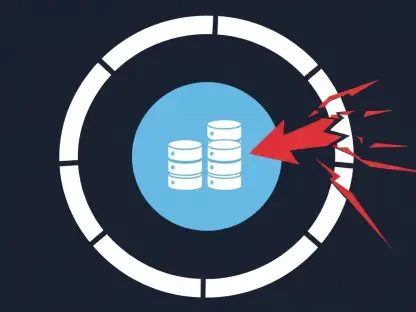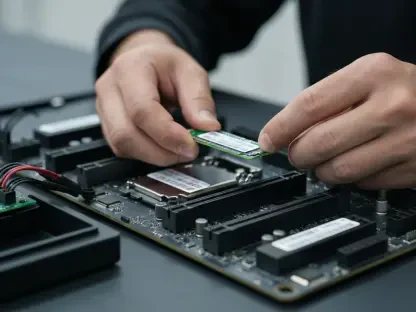In an era where technological advancements are fast outpacing traditional methods of securing digital information, the National Institute of Standards and Technology (NIST) prepares to publish the first standards for Post-Quantum Cryptography (PQC). The introduction of PQC is a significant advancement aimed at countering the emerging threats posed by quantum computers.
Urgency and Significance
Quantum computers pose a notable threat to existing encryption systems, particularly public-key cryptosystems such as RSA. The sophistication of these machines lies in their potential ability to decrypt data that is currently considered secure. Despite the uncertainty around when sufficiently powerful quantum computers will be developed, the estimated timeframe ranges from 10 to 15 years. The concern is heightened by the potential “harvest-now-decrypt-later” strategy, where encrypted data collected today could be decrypted by future quantum computers, which underscores the urgency of developing quantum-resistant algorithms.
NIST’s Role and Project Overview
NIST has been at the forefront of PQC since 2016, conducting a methodical selection process for quantum-resistant algorithms through multiple rounds of submissions and evaluations. The institution’s goal is to finalize standards that will serve as the backbone for future cryptographic practices. This extensive evaluation process has reached its fourth and final round, with the cryptographic community eagerly anticipating the release of the standards. The forthcoming standards are expected to offer a robust framework to counter the cryptographic challenges posed by quantum computing.
Collaboration and Global Participation
The Migration to Post-Quantum Cryptography project led by NIST’s National Cybersecurity Center of Excellence (NCCoE) has been an exemplary model of collaborative effort. Involving around 40 commercial participants, the project includes industry giants such as IBM and Deloitte alongside newer players like QuSecure and SandboxAQ. This level of collaboration signifies the importance of a united front in tackling the impending quantum threat. International cooperation has been notable, although some countries, including China and Russia, have adopted divergent approaches, underscoring the varying levels of trust and strategy in global cybersecurity efforts.
Challenges and Transition Strategies
Transitioning to PQC is a complex endeavor that demands comprehensive planning and resource allocation. It is not a simple upgrade but involves identifying all instances of current cryptography usage, selecting appropriate quantum-resistant algorithms, and ensuring seamless system-wide integration. The intricacies of this process necessitate a focus on security, performance, and future-proofing through crypto-agility. Crypto-agility ensures that systems can adapt to evolving cryptographic needs without significant disruptions, which is crucial in maintaining security and operational efficiency during the transition phase.
Evaluative Criteria and Benchmarking
NIST’s assessment of algorithms centers around security, performance, and a wide array of additional criteria. This rigorous evaluation entails both theoretical security considerations and practical performance benchmarks, ensuring the selected algorithms offer robust resistance to quantum attacks while maintaining efficiency. Different security categories are considered to ensure comprehensive protection against potential quantum threats, thus bolstering confidence in the newly established standards.
Geopolitical Dynamics and Rivalries
While the cryptographic community largely relies on international collaboration, geopolitical tensions influence the standards adopted by different countries. China, for example, is developing its own PQC standards, which are similar to those being utilized globally but have been chosen through more exclusive internal processes. This cautious approach towards US-led initiatives highlights the broader geopolitical dynamics at play, influencing the global landscape of cryptographic development and adoption.
The Broader Consensus and Future Outlook
The migration to PQC reflects a broad consensus on the imminent threat posed by quantum computing and the necessity of preemptive action. Comprehensive collaboration, rigorous testing, and strategic foresight are integral to this process. Industry leaders and government agencies are compelled to prepare rigorously for a seamless transition. The consolidation of efforts underscores the importance of preemptive measures in safeguarding digital infrastructures against future quantum capabilities. As quantum computing continues to evolve, it poses a fundamental threat to existing cryptographic mechanisms. NIST has been preparing for this eventuality through a systematic selection of PQC algorithms since 2016. The international collaborative effort is evident in the diverse participation of commercial entities and researchers. While challenges abound, particularly in the intricate process of migration and ensuring comprehensive protection, there is a unified push towards readiness.
Conclusion
In a time when technological progress is rapidly outstripping traditional methods of safeguarding digital information, the National Institute of Standards and Technology (NIST) is on the verge of publishing the first-ever standards for Post-Quantum Cryptography (PQC). This groundbreaking move is essential for addressing the imminent risks posed by quantum computing technology. Quantum computers, once fully developed, have the potential to break the cryptographic codes used today, rendering many current data protection techniques obsolete. Hence, the introduction of PQC is not just a minor upgrade; it’s a fundamental shift in how we think about cybersecurity in a post-quantum world.NIST’s efforts in this area are a response to the increasing recognition that current encryption standards may soon be vulnerable. The PQC standards are designed to be resistant to both conventional and quantum attacks, ensuring a higher level of security for digital communications and data storage. Researchers and professionals in cybersecurity are keenly anticipating the release of these standards, as they will lay the foundation for future-proof encryption practices. This initiative is a testament to the proactive steps being taken to secure our digital future against the quantum leap in technology.









